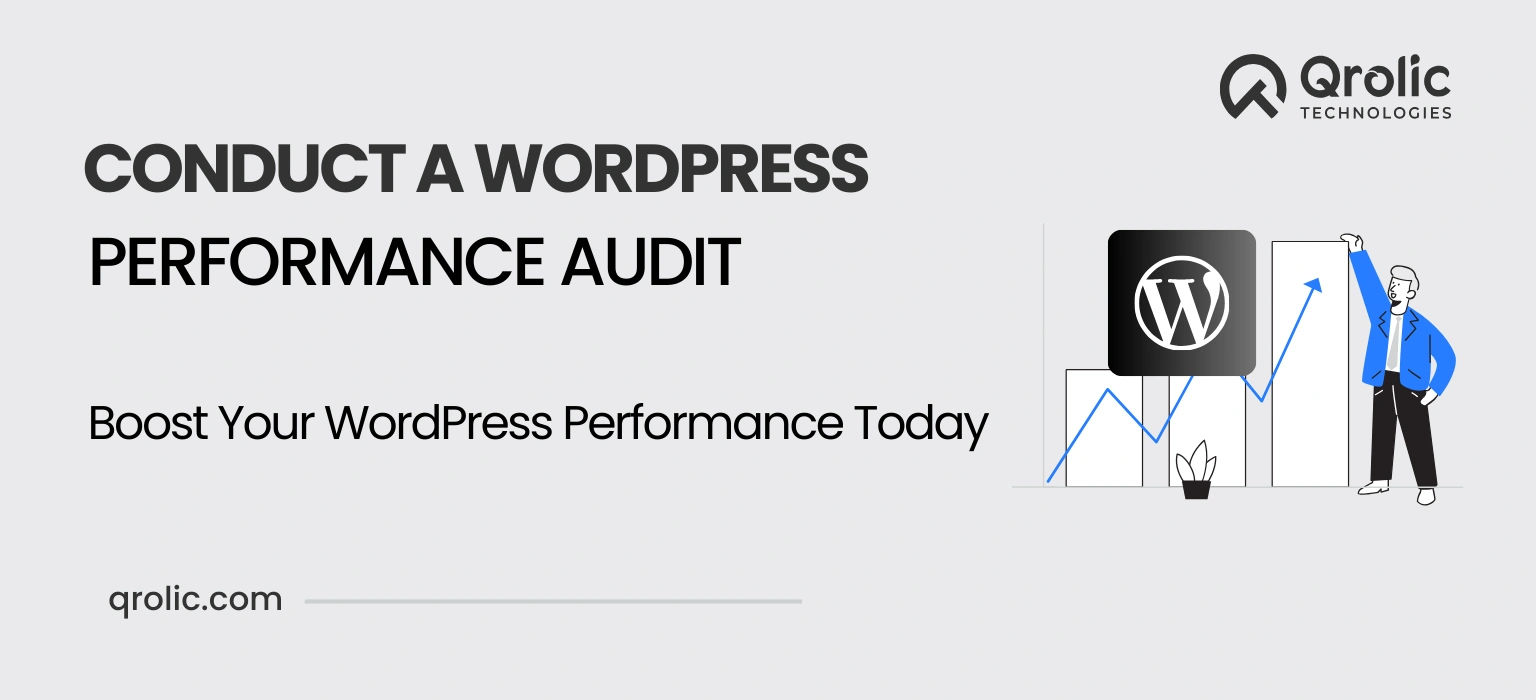Ensuring optimal performance is essential for the success of any WordPress website. A slow website not only frustrates visitors but can also negatively impact search engine rankings, user engagement, and conversion rates. A WordPress performance audit is the first step in identifying and resolving performance issues to maintain a fast, secure, and reliable website.
This guide will walk you through the steps of conducting a comprehensive WordPress performance audit, helping you identify bottlenecks, optimize your website, and enhance user experiences.
Quick Summary:
- Audit WordPress for speed, SEO, and user experience.
- Use tools like PageSpeed Insights and GTmetrix to start.
- Optimize images, plugins, database, and enable caching.
- Check hosting, Core Web Vitals, and mobile performance.
Table of Contents
- Why Is a WordPress Performance Audit Important?
- Preparing for a Performance Audit
- Tools You’ll Need
- Define Your Goals
- Key Areas to Evaluate During a WordPress Performance Audit
- 1. Hosting Environment
- How to Evaluate Hosting:
- 2. Core Web Vitals
- Improving Core Web Vitals:
- 3. Website Speed and Loading Times
- Steps to Improve Loading Times:
- 4. Image Optimization
- Best Practices for Image Optimization:
- 5. Plugins and Themes
- Plugin Evaluation Checklist:
- Theme Optimization:
- 6. Database Optimization
- Steps for Database Optimization:
- 7. Caching
- Types of Caching:
- Recommended Caching Plugins:
- 8. Security Performance
- Key Security Measures:
- 9. Mobile Optimization
- Mobile Optimization Tips:
- Detailed Audit Process
- About Qrolic Technologies
- Why Choose Qrolic Technologies?
- Conclusion
Why Is a WordPress Performance Audit Important?
A performance audit helps ensure that your WordPress website operates at peak efficiency, meeting the expectations of both visitors and search engines. Here are some reasons why an audit is essential:
- User Experience: Visitors expect a website to load within 2-3 seconds. Anything slower can lead to a higher bounce rate.
- SEO: Google’s algorithms prioritize fast-loading websites, particularly with Core Web Vitals as a ranking factor.
- Conversion Rates: A delay of even one second in page response can result in a 7% reduction in conversions.
- Security: Identifying vulnerabilities during a performance audit can help prevent security breaches.
- Scalability: Regular audits prepare your website for increased traffic and growth.
Preparing for a Performance Audit
Before starting the audit, gather the necessary tools and resources. A structured approach ensures a thorough analysis and actionable insights.
Tools You’ll Need
- Google PageSpeed Insights: To measure Core Web Vitals and get improvement suggestions.
- GTmetrix: Offers a comprehensive performance analysis with detailed recommendations.
- Pingdom Tools: Assesses website speed and provides insights into loading time.
- Query Monitor: A WordPress plugin to analyze database queries and debug issues.
- Browser DevTools: Built-in tools in Chrome, Edge, and Firefox for real-time performance monitoring.
Define Your Goals
Identify what you aim to achieve with the audit:
- Faster Loading Times: Aim for under 2 seconds.
- Improved Mobile Performance: Ensure responsiveness and usability on all devices.
- Optimized Database: Reduce unnecessary data and speed up queries.
- Enhanced User Engagement: Lower bounce rates and improve navigation.
Key Areas to Evaluate During a WordPress Performance Audit
A performance audit should focus on the following critical areas to identify weaknesses and optimize for better results:
1. Hosting Environment
Your website’s hosting provider plays a pivotal role in its performance. Evaluate the following aspects:
- Server Response Time (TTFB): Measure the time it takes for your server to respond to a browser request. A TTFB under 200 ms is ideal.
- Hosting Type: Shared hosting may limit resources; consider upgrading to managed WordPress hosting for better performance.
- Content Delivery Network (CDN): Distribute content globally for faster loading times. Popular CDNs include Cloudflare and Amazon CloudFront.
How to Evaluate Hosting:
- Use tools like WebPageTest or Pingdom to measure server response times.
- Check uptime metrics provided by your hosting provider.
2. Core Web Vitals
Core Web Vitals are Google’s metrics for evaluating user experience:
- Largest Contentful Paint (LCP): Measures the time it takes for the largest visible content to load. Aim for less than 2.5 seconds.
- First Input Delay (FID): Measures how quickly your site responds to user interactions. Keep it below 100 ms.
- Cumulative Layout Shift (CLS): Tracks unexpected layout shifts. Maintain a score below 0.1.
Improving Core Web Vitals:
- Optimize images and videos to reduce LCP.
- Minify CSS and JavaScript to improve FID.
- Use a well-coded theme to stabilize CLS.
3. Website Speed and Loading Times
Page speed impacts SEO and user satisfaction. Break down loading times by analyzing:
- Render-Blocking Resources: Identify and minimize JavaScript or CSS that delays rendering.
- Third-Party Scripts: Reduce the number of third-party scripts, such as ad trackers.
Steps to Improve Loading Times:
- Use a performance tool like GTmetrix to identify slow-loading elements.
- Enable lazy loading for images and videos.
- Combine and minify CSS/JS files using tools like Autoptimize.
4. Image Optimization
Images can account for a significant portion of your website’s load time. Optimize them without compromising quality.
Best Practices for Image Optimization:
- Compression: Use tools like TinyPNG or plugins like Smush to compress images.
- Modern Formats: Serve images in WebP format for reduced file sizes.
- Responsive Images: Use the
srcsetattribute for optimal resolution across devices.
5. Plugins and Themes
Inefficient plugins and themes can slow down your website.
Plugin Evaluation Checklist:
- Use Query Monitor to find resource-intensive plugins.
- Deactivate and test plugins to identify performance bottlenecks.
- Replace poorly coded plugins with lightweight alternatives.
Theme Optimization:
- Use lightweight themes like GeneratePress or Astra.
- Ensure themes are regularly updated for compatibility and performance.
6. Database Optimization
A cluttered database can slow down queries and increase load times.
Steps for Database Optimization:
- Remove unused data like post revisions, spam comments, and transients using WP-Optimize.
- Implement indexing to speed up database queries.
- Regularly backup and clean your database.
7. Caching
Caching improves load times by storing static versions of your website.
Types of Caching:
- Browser Caching: Stores site resources locally for faster repeat visits.
- Page Caching: Generates static versions of dynamic content.
- Object Caching: Speeds up database queries.
Recommended Caching Plugins:
- WP Rocket
- LiteSpeed Cache
- W3 Total Cache
8. Security Performance
Security is a critical component of overall website performance.
Key Security Measures:
- Regularly update WordPress core, themes, and plugins.
- Use security plugins like Wordfence or Sucuri.
- Implement HTTPS and secure your website with an SSL certificate.
9. Mobile Optimization
With mobile traffic surpassing desktop, optimizing for mobile is non-negotiable.
Mobile Optimization Tips:
- Use responsive design frameworks.
- Test performance with Google’s Mobile-Friendly Test.
- Optimize font sizes, button placements, and touch targets for mobile users.
Detailed Audit Process
Follow these steps to conduct a complete audit:
- Test Website Speed: Use tools like GTmetrix and Google PageSpeed Insights to gather baseline performance data.
- Analyze Plugins and Themes: Evaluate the impact of active plugins and your theme on load time.
- Optimize Images: Compress and convert images to modern formats.
- Enable Caching: Set up browser, page, and object caching for quicker load times.
- Review Core Web Vitals: Identify areas where your website fails Google’s metrics and apply targeted fixes.
- Database Cleanup: Remove unnecessary data and optimize queries.
- Implement a CDN: Use a CDN to improve content delivery across global locations.
- Enhance Mobile Usability: Optimize design and performance for mobile devices.
About Qrolic Technologies
Qrolic Technologies is a leading WordPress agency specializing in performance optimization, custom development, and web solutions tailored to your business needs. With over 7 years of experience, we’ve helped businesses across industries achieve fast, reliable, and scalable websites.
Why Choose Qrolic Technologies?
- Expert Team: Our WordPress developers are seasoned experts in handling complex website challenges.
- Custom Solutions: From plugin development to performance optimization, we craft solutions designed specifically for your website.
- Advanced Tools: We use cutting-edge tools to enhance website performance and security.
- Ongoing Support: Our dedicated team provides continuous monitoring and support to ensure peak performance.
Ready to optimize your website? Contact Qrolic Technologies today for a free consultation!
Conclusion
A comprehensive WordPress performance audit is essential for maintaining a fast, secure, and reliable website. By focusing on critical areas like hosting, Core Web Vitals, caching, and database optimization, you can significantly enhance your site’s performance.
At Qrolic Technologies, we specialize in conducting performance audits and implementing tailored solutions to meet your website’s unique needs. Whether you need a one-time audit or ongoing optimization, we’re here to help. Reach out to us today to unlock your website’s full potential!






